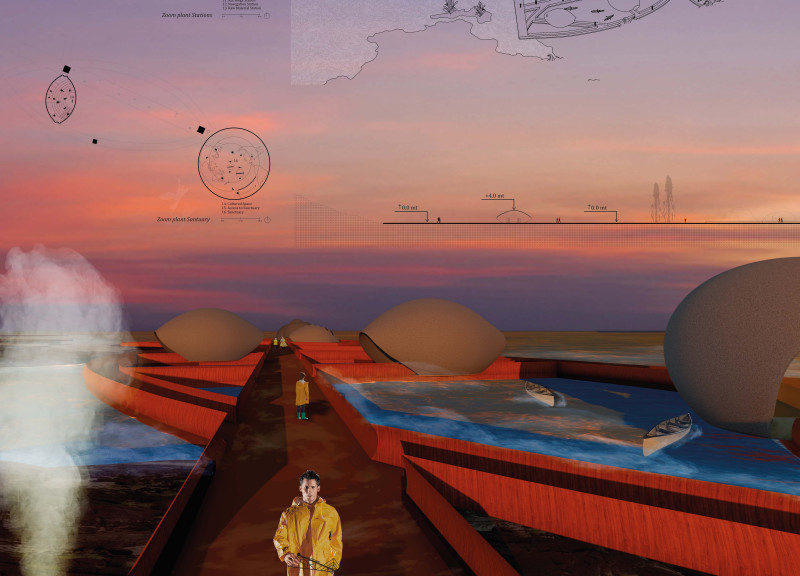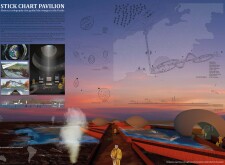5 key facts about this project
The Stick Chart Pavilion serves as a modern tribute to the ancient navigation techniques of Polynesians, located 7,000 kilometers from its cultural roots. The pavilion functions as both an educational space and a cultural landmark, highlighting the use of stick charts—traditional tools that helped navigators traverse vast stretches of the Pacific Ocean by observing the ocean, winds, and stars. The design brings together elements of cultural heritage and visitor experience, creating a place where the intricate knowledge of Polynesian navigation can be explored.
Architecture Concept
The design is organized into three distinct sections: First Contact, Second Contact, and Third Contact. First Contact features an artificial stick chart that represents the journey from Samoa, the heart of Polynesian culture, to Rapa Nui, one of the most isolated islands in the world. This section illustrates the breadth of Polynesian maritime practices, emphasizing the importance of geographic knowledge in shaping cultural identity.
Spatial Organization
The Second Contact focuses on how visitors experience the pavilion. It begins at "The Starting Point," framed by the shapes of ocean water spiracles, inviting guests to engage with the journey ahead. Visitors then move into "The Voyage," marked by paths and stations that reflect the sensation of navigation through the ocean. This layout encourages exploration and interaction, enhancing the understanding of what it means to travel by sea.
Engagement and Interaction
In the Third Contact, the pavilion allows for direct engagement with original stick charts displayed in "The Sanctuary." This area acts as both a contemplative space and a learning opportunity, showcasing artifacts that tell stories of ancient skills and knowledge. The focus on interaction deepens visitors' appreciation for Polynesian heritage and the significance of navigation in their history.
Spatial Experience
The overall design is characterized by flowing shapes that mimic waves and routes taken by navigators. Each space, from the reception area to the coffee shop, is carefully planned to fit within the larger theme of navigation. The arrangement of interior and exterior spaces promotes movement, inviting visitors to explore and reflect on their experience.
The pavilion is completed by its organic form, where natural light filters in to create a dynamic atmosphere. The interplay of light and shadow brings the space to life, echoing the rhythms of the ocean that have guided generations of Polynesian navigators. This embodied experience resonates with the cultural narratives informing the design.



















































